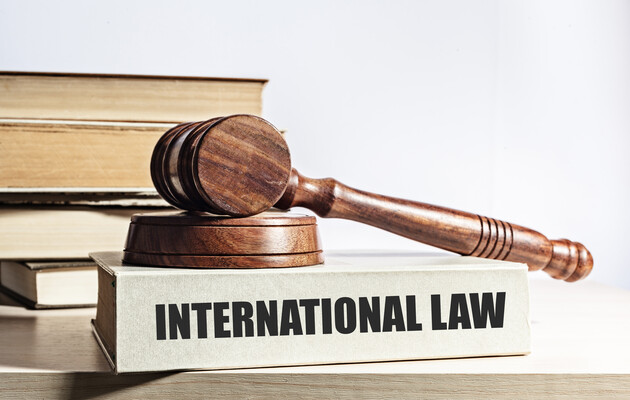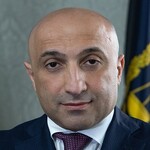New 'weapon' for the Ukrainian Army is legal
For almost a year and a half, the Working Group on the Implementation of International Humanitarian Law (IHL) and the Provision of Legal Services operated within the command of the Territorial Defense Forces of the Armed Forces of Ukraine. During this time, it managed to implement many projects on its basis that need to be scaled up to the level of the Armed Forces of Ukraine.
The idea of creating the Working Group was born from the first tumultuous days of full-scale Russian aggression. And it crystallized in the first days of the de-occupation of Kyiv region, when the scale of international crimes committed by the Russian army became clear and the evidence should not be lost. And it was the Armed Forces that were the first contact for the victims, so, in addition to security challenges and repelling the aggressor, they ensured the preservation of evidence that would facilitate future justice.
Therefore, on the basis of the Territorial Defense Forces, which played a key role in the liberation of the territories, a specialized working group was formed focusing on the implementation of IHL and related tasks. In fact, the main goal of the working group was to change attitudes and approaches to the application of IHL. After all, this should become the basis for further transformation of the Ukrainian Armed Forces into an effective and efficient mechanism for the protection of the country, meeting the standards of the civilized world. It is not a coincidence that international humanitarian law is called the law of war. This is essentially about the rules of warfare. Rules that are a product of the development of civilization and allow us to be part of the civilized world. Rules that remind us of humanity even in such terrible times and do not allow us to behave like the Russian army. The rules that, on the one hand, protect civilians, the wounded and POWs (who are protected categories), and on the other hand, protect the military itself from committing crimes, and thus become a preventive tool.
The work involved specialists in national and international law, lawyers, attorneys, and prosecutors who, having been mobilized to the Armed Forces, used their civilian experience to adapt the Territorial Defense Forces to work with the law of war.
A number of tools were chosen to achieve this goal:
- actually, ensuring compliance with international humanitarian law (the law of armed conflict) in the TDF of the Armed Forces of Ukraine;
- introducing a mechanism for collecting data (preserving evidence) from the battlefield on violations of IHL and human rights;
- implementing of a mechanism for the participation of the TDF of the Armed Forces of Ukraine in the provision of free legal aid in accordance with the Law of Ukraine "On the Principles of National Resistance";
- development and implementation of a national model of involvement of the Armed Forces of Ukraine in state measures to protect and defend cultural heritage and cultural property during armed conflict.
- This was the key focus of the working group.
I would like to concentrate on the implementation of IHL norms, as this is the most ambitious task, while the others serve as tools for its implementation.
Why is this necessary in general? First of all, we must understand that the very norms and provisions of IHL are the product of the XIX-XX centuries and the result of large-scale wars that were of a traditional conventional nature. That is, in some cases, they are archaic and not adapted to the realities of modern warfare in the XXI century. And for more than 150 years, wars have really changed. Today we are dealing with full spectrum, hybrid, information wars, and new types of weapons, such as drones. And all this is not only about mastering new types of weapons, but also about legal aspects. Accordingly, it is also about building up the same "new" functions for the army.
In addition, the effective implementation of international humanitarian law in the army is important for preventing the committing of international crimes. Simply put, when our soldiers see and record crimes committed by the enemy, they understand that they cannot do so, as this entails criminal liability. Thus, in fact, by training our soldiers, we are also protecting them. After all, history knows many cases when soldiers who were considered heroes at home were tried for international crimes, for example, in Croatia. We have no right to allow this to happen.
Another important point is that compliance with the law of armed conflict is part of Ukraine's international obligations and a condition for partner countries to provide us with donor and technical assistance, modern weapons and ammunition, and to maintain and strengthen international sanctions pressure on the aggressor state.
Let us not forget the strategic importance of supporting the principles of the global security architecture and the international system of legal order formed after World War II, and of promoting the achievement of sufficient interoperability of the Armed Forces of Ukraine and other components of the security and defense sector with the relevant structures of NATO member states, as well as Ukraine's European and Euro-Atlantic integration in a short time.
During its existence, the working group has investigated the state of implementation of the IHL Instruction, conducted IHL training for 770 servicemen, developed information, training and methodological materials on IHL, established interaction between various structural units in terms of implementing the IHL Instruction, partially fulfilled the requirements of this Instruction on marking protected objects, etc. As a result, we can conclude that the implementation of IHL should be part of the decision-making process. Which, in turn, is a planning model that includes the following stages: receiving a task, assessing the situation, developing options for courses of action, analyzing options for courses of action, comparing options for courses of action, approving the selected option, and preparing orders. At each of these stages, compliance with IHL should be taken into account.
The working group during its activities identified certain problems that need to be solved:
- the tasks of building and maintaining the processes of implementing IHL in the Armed Forces of Ukraine are distributed among different structural units, which complicates the process of synchronizing and establishing an effective model of implementation by the personnel;
- the existing challenges require specialized knowledge and expertise, which was not prioritized in the army in previous periods;
- military personnel of various structural units are not trained and do not have sufficient knowledge of IHL;
- there is an urgent need to introduce two separate specialties - legal advisor on current activities and planning of combat operations (operational lawyer) with the corresponding change in the legal framework and training of specialists;
- it is necessary to organize systematic monitoring of violations of IHL.
So who is responsible for ensuring compliance with IHL during planning? According to the IHL Instruction, in the context of armed conflict, during the planning of operations, the assistant commander for legal affairs acts as a legal adviser to the commander to ensure compliance with international humanitarian law, provides the commander with advice, counsel and clarification on restrictions on the use of forces and means. And military personnel of the civil-military cooperation unit provide situational awareness of civilian infrastructure and objects protected by IHL located in the controlled part of the territory of Ukraine. We can also talk about a certain role of intelligence.
The main tasks of intelligence, taking into account the norms of international humanitarian law, are to obtain reliable intelligence on the presence, location and condition of objects protected by international humanitarian law on the territory controlled by the Russian Federation, and the degree of their use by the enemy. Planning should take into account all the above information and make appropriate calculations, in particular, to prevent the negative consequences of combat operations for the civilian environment.
Thus, during the period of its functioning, the working group conducted a comprehensive study of the state of application and implementation of the requirements of the IHL Instruction and other national and international normative acts in the field of the law of armed conflict. And based on this, we have come to a number of important conclusions regarding the further implementation of IHL.
For the system to work, a comprehensive understanding of the tasks and priorities at each level and stage of planning is required, as well as constant interaction. Then it will be possible to talk about the implementation of specific steps, such as: development and implementation of methodological and training materials on the application of IHL; development and implementation of IHL training programs for military personnel of different levels with a focus on their area of responsibility; conducting field visits to monitor the state of compliance with IHL; development of information platforms (such as Delta); development and implementation of an algorithm for the involvement and participation of a legal adviser on the operational activities of troops (forces) at all stages of the military decision-making process during battle planning in the Armed Forces of Ukraine in accordance with NATO standards and criteria, etc.
It is the implementation of these steps that can ensure the functioning of a modern Ukrainian army that respects and complies with the rule of law, which is significantly different from the Russian army. Much has already been done, but this experience needs to be scaled up and constantly improved, as modern warfare requires adaptability and flexibility.
Read this article in Ukrainian and russian.
Please select it with the mouse and press Ctrl+Enter or Submit a bug












 Login with Google
Login with Google